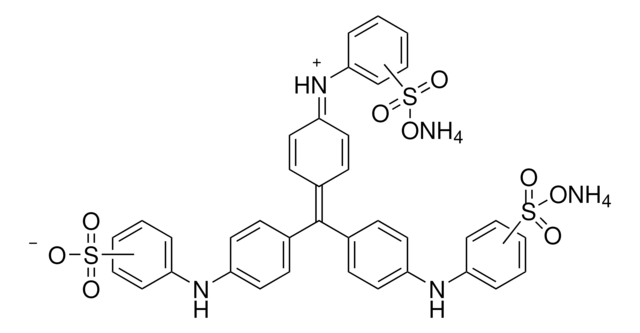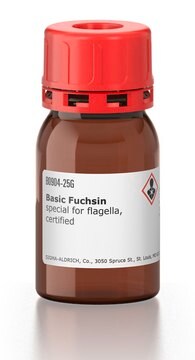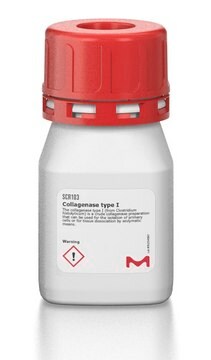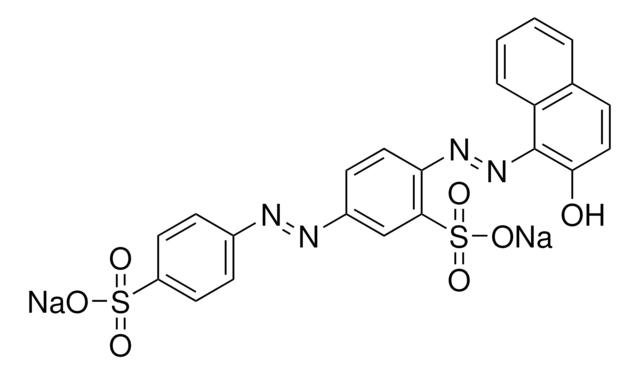Key Documents
F8129
Acid Fuchsin
Powder
Synonim(y):
Acid Violet 19, Fuchsin S, Fuchsin acid, Rubine S
About This Item
Polecane produkty
product name
Acid Fuchsin, used in tissue staining
Poziom jakości
Postać
powder
skład
Dye content, ~70%
kolor
blue-green
rozpuszczalność
H2O: 1 mg/mL
Zastosowanie
diagnostic assay manufacturing
hematology
histology
temp. przechowywania
room temp
ciąg SMILES
[Na+].[Na+].Cc1cc(cc(c1N)S([O-])(=O)=O)\C(c2ccc(N)c(c2)S([O-])(=O)=O)=C3/C=CC(=N)C(=C3)S(O)(=O)=O
InChI
1S/C20H19N3O9S3.2Na/c1-10-6-13(9-18(20(10)23)35(30,31)32)19(11-2-4-14(21)16(7-11)33(24,25)26)12-3-5-15(22)17(8-12)34(27,28)29;;/h2-9,23H,21-22H2,1H3,(H,24,25,26)(H,27,28,29)(H,30,31,32);;/q;2*+1/p-2
Klucz InChI
WZRZTHMJPHPAMU-UHFFFAOYSA-L
Szukasz podobnych produktów? Odwiedź Przewodnik dotyczący porównywania produktów
Powiązane kategorie
Opis ogólny
Zastosowanie
Kod klasy składowania
11 - Combustible Solids
Klasa zagrożenia wodnego (WGK)
WGK 3
Temperatura zapłonu (°F)
Not applicable
Temperatura zapłonu (°C)
Not applicable
Środki ochrony indywidualnej
dust mask type N95 (US), Eyeshields, Gloves
Certyfikaty analizy (CoA)
Poszukaj Certyfikaty analizy (CoA), wpisując numer partii/serii produktów. Numery serii i partii można znaleźć na etykiecie produktu po słowach „seria” lub „partia”.
Masz już ten produkt?
Dokumenty związane z niedawno zakupionymi produktami zostały zamieszczone w Bibliotece dokumentów.
Nasz zespół naukowców ma doświadczenie we wszystkich obszarach badań, w tym w naukach przyrodniczych, materiałoznawstwie, syntezie chemicznej, chromatografii, analityce i wielu innych dziedzinach.
Skontaktuj się z zespołem ds. pomocy technicznej







